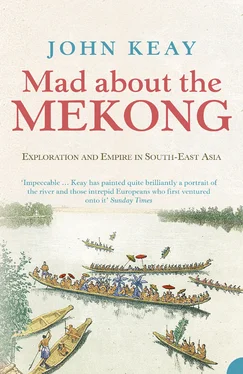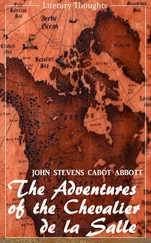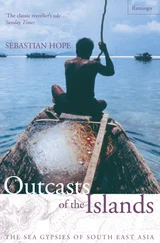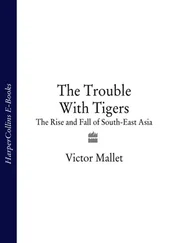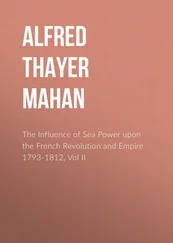In English, rivers are usually masculine and often geriatric – ‘Ol’ Man River’ or ‘Old Father Thames’. Fleuve in French is also masculine. But it was rivière , a feminine noun denoting a youthful river indirectly connected to the sea, which slowly gained currency among the personnel of the Mekong Exploration Commission. Their river was unquestionably female. Clad in virgin forest, she suffered no bridges across her bosom, no promenades along her brow nor trade routes down her limbs. Beguiling, wanton and capricious, in a pre-feminist era she conformed to every bearded bachelor’s fantasy of a wild maiden from the hills.
For this apparent neglect of commercial grooming there are sound practical reasons, the first of which was about to confront the Mekong Exploration Commission. Above Kompong Cham the islands of greenery compose themselves and rejoin the shoreline. In the dry season, their place midstream is taken by shoals of the finest sand on which the skeletons of mighty trees lie stranded. Propped on tangled limbs, the trees recline on the sandbars with feet in the air like giants on holiday. But in July, with the river rising, the giants launch themselves into the flood, a hazard to diminutive gunboats. More worryingly for the expedition, glistening gobs of muddy foam accompanied the trees and, drifting erratically with no apparent regard for the current, told of sub-surface disturbance and turbulent times ahead.
Low hills loomed simultaneously through the mist to the north. Excluding solitary outcrops like Phnom Krom, the hills were the first hint of higher ground. The landscape had at last acquired a horizon and the Delta a conclusion. To the Commission the prospect imparted a new sense of direction and purpose. This was quickened by the changing shoreline. Almost imperceptibly the river had settled between natural margins. Just low sandy ledges, they were the sort of cliffs on which thrift might thrive and sand-martins nest. Though unsensational, to new arrivals from the Delta they were another welcome novelty. After five hundred kilometres of welling, slopping, brimming confusion, the river had recognisable banks.
They soon grew higher. On the second day the expedition reached Kratie and had to climb from the landing stage up a long flight of muddy steps to gain the palm and bougainvillea parkland on which the village was scattered. Here they halted for a week. Though barely thirty-six hours into the voyage, it was time to trans-ship.
The new boats were dugout canoes, and although they had evidently been pre-ordered, they needed to be substantially customised for the conditions ahead. Meanwhile the five tons of baggage had to be carefully sorted and, not for the last time, ferociously reduced. ‘It foreshadowed the utter destitution which awaited us further on,’ noted the rueful de Carné.
This transfer, so soon after leaving Phnom Penh, raises questions about just how much Lagrée and Garnier already knew of the river ahead. Was it really about to take them by surprise? Or were they rather better informed than they pretended? If nothing was known of its navigational properties, why had they anticipated the need for canoes? Yet if canoes were inevitable, why had they burdened themselves with such an impossible quantity of luggage? And why, as the downpours of June were succeeded by the deluges of July, were they tackling the river at the height of the rains, the least comfortable season for travel and the surest for contracting malaria?
While they unpacked and repacked, the canonnière took its departure. Last letters home were hastily written and entrusted to the crew. As the gunboat pulled away, the six explorers felt as if they themselves were being cast adrift. Their last link with all that was French and familiar steamed out of sight round a bend in the river, leaving them to a silence broken only by the whine of mosquitoes. Kratie had nothing to offer. They lodged in a hut through whose roof dripped the rain. It was ‘a completely isolated village … with no commercial trade of any kind’, according to Garnier. The only way home was now the way ahead. ‘Henceforth France was before us, not behind us,’ wrote de Carné. ‘Our sights were set on China.’
But Lagrée, with the wisdom of years and the economy of the sore-throated, sounded a note of caution. Between Cambodia and China lay more than sixteen hundred kilometres of river attended, no doubt, by a like number of perils and disappointments. Excitement was premature, he croaked, if not downright dangerous; for was not ‘enthusiasm near neighbour to despair’?
Above Kratie leggy trees of impressive height and symmetry take up position along the river’s bank like spectators awaiting a naval review. The mud-thick flood, over a kilometre wide, nuzzles their roots and tugs at their dangling lianas but concedes nothing to them in scale. During the few months of the year in which navigation onwards to Stung Treng is possible, the little white passenger launch looks like a bathtime accessory as it skims through the frothy suds. In a setting so grand something more palatial seems called for – a Mississippi paddle-steamer, perhaps, with the orchestra playing, the tables set, and Scarlett O’Hara on the topmost deck against a blood-red sky.
This is not altogether fanciful. To patriotic French explorers the Mekong also brought to mind the Mississippi. Primed on colonial history, Garnier rarely missed a relevant parallel, while Louis de Carné’s diplomatic training lent an international dimension to his political horizons. In the early eighteenth century Louisiana had been French. It had been named in honour of Louis XIV, and its port of New Orleans had developed to provide continental access by way of the Mississippi. Subsequent French losses in the New World had been as much a matter for patriotic regret as those in India. To redress them, the Second Empire had just wished Maximilian on the Mexicans. And now, with the delicious complementarity which so appealed to Gallic logic, Saigon and the Mekong were supposed to afford that exclusively French access to the Asian interior which New Orleans and the Mississippi had promised to the American interior.
That was the theory anyway, and although it was about to be seriously compromised, the dream of one day being able to paddle-steam into the heart of the continent would not readily be relinquished. In the wake of the Mekong Exploration Commission a succession of pounding little vessels would, over the next fifty years, try and generally fail to force a passage upriver, prompting all manner of bizarre technological solutions, most of which would also fail.
The slim launch which today plies, conditions permitting, from Kratie to Stung Treng is the unworthy inheritor of this dream. A twenty-first-century apology for nineteenth-century presumption, it addresses the increasingly angry flood with circumspection, swooping across its troubled surface in search of sheltered water and unimpeded channels like an ice-queen on a busy rink. Hastily the luggage is lashed beneath plastic tarpaulins; passengers are ordered inside and the cabin door sealed. The turns become sharper, the engine noisier. Condensation streams down the windows as if the exertion were too much. But wiping away the trickles makes no difference. The waves thrashing against the hull on the outside preclude visibility. It is like being marooned in a storm-tossed diving capsule.
Although not the ideal way of experiencing the Mekong’s first rapids, the voyage compares favourably with a week of wet boating at the height of the monsoon. For the same run the expedition had secured a fleet of the dugout canoes which they called radeaux. The word translates as ‘barges’, but they were really modified pirogues. Closely related to those now reserved for racing, they were destined to become painfully familiar. Though their numbers would be reduced from the initial eight, this mode of transport would remain the same until the expedition abandoned the river altogether. Boats and boatmen would be frequently changed, a cause for endless delay and no little grumbling, but the style of boat and the method of propulsion would be much the same throughout.
Читать дальше
